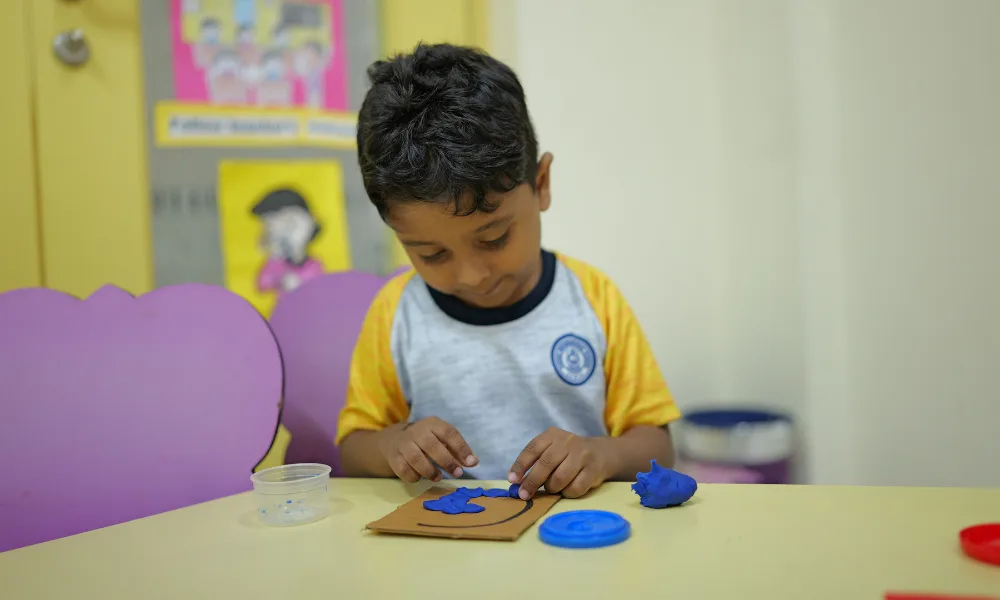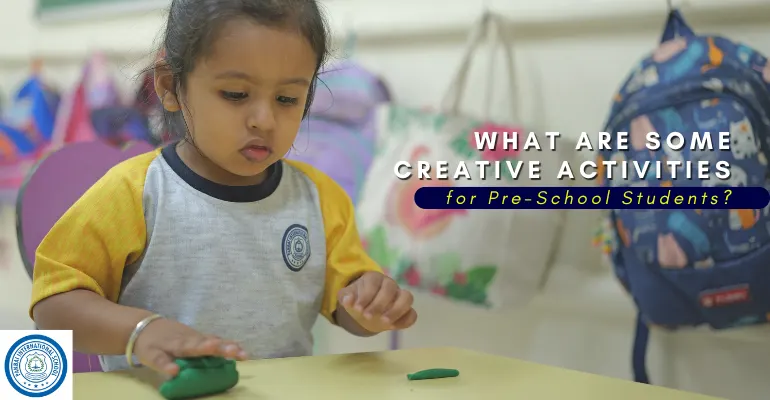What Are Some Creative Activities for Pre-School Students?
June 19, 2025 2025-06-19 16:08What Are Some Creative Activities for Pre-School Students?
Fostering creativity at an early age is essential for children’s overall development. Educators and parents must understand the importance of creative activities for students, especially at the preschool level.
Creativity helps boost cognitive development, emotional intelligence, and problem-solving skills. When children are exposed to playful and expressive learning environments, they enjoy the process and develop a lifelong love for learning.
Why Creative Activities Matter in Early Childhood?


Children are naturally curious. Their minds are like sponges, absorbing information through every interaction, sight, and sound. Creative activities for students tap into this innate curiosity and provide a structure where imagination leads learning.
Engaging young children in artistic and experiential learning methods rather than solely in traditional rote methods supports foundational brain development.
Some creative activities for Students in Pre-Schools:


1 . Art-Based Activities That Build Expression
Preschool students often love working with colors, textures, and materials. These activities encourage self-expression and fine motor skills:
- Finger Painting: Allows children to explore touch and color mixing.
- Clay Modeling: Enhances imagination while developing hand muscles.
- Collage Making: Promotes decision-making and spatial understanding.
These art-based creative activities for students are especially beneficial when integrated into daily schedules.
2. Music and Movement
Preschoolers thrive on rhythm. Songs, rhymes, and movement games are entertaining and help children develop coordination, memory, and language skills.
- Dancing to different beats improves balance and rhythm.
- Rhyming games build vocabulary and auditory skills.
- Creating simple instruments and making music enhances auditory creativity.
Such interactive sessions also make transitions smoother during school hours and help children burn off excess energy.
3. Storytelling and Role Play
One of the most effective creative activities for students is storytelling. It enhances listening skills, comprehension, and expressive language.
- Puppet Shows: Allow children to retell stories using characters they create.
- Dress-Up Corners: Encourage role-play that teaches empathy and social interaction.
- Story Cubes: Small dice with pictures that children roll and use to build their stories.
These imaginative methods prepare children for structured academic learning while enhancing their ability to communicate ideas.
4. Hands-On Science Activities
Creativity isn’t limited to the arts. It plays a key role in science learning, too. Introducing preschoolers to basic experiments enhances their curiosity and builds their observation skills.
- Mixing colors with water and food dye
- Growing plants from seeds in small jars
- Observing insect behavior with magnifying glasses
These simple, fun tasks offer opportunities to explore the world through touch, sight, and discovery, enriching creative activities for students in real-world contexts.
5. Outdoor Exploration and Nature-Based Learning
Preschoolers benefit immensely from time outdoors. Nature calms children and opens their eyes to patterns, life cycles, and sensory experiences.
- Nature walks to collect leaves, flowers, and stones
- Creating nature collages
- Outdoor scavenger hunts
Such nature-oriented creative activities allow students to develop a bond with the environment early on, laying the foundation for ecological awareness.
6. Sensory Play for Brain Development
Sensory activities engage multiple senses, especially during preschool when neurological development is rapid.
- Sand and water play
- Playing with slime or foam
- Sorting objects by texture or color
These fun experiences support language development, fine motor coordination, and critical thinking.
7. Integrating Technology Thoughtfully
In today’s digital age, tech can also play a creative role in preschool learning. When used mindfully, digital tools can aid imagination rather than hinder it.
- Interactive storytelling apps
- Drawing on tablets with styluses
- Virtual animal or space explorations
These resources should be used in moderation and preferably under adult supervision. They offer a different medium through which creative activities for students can thrive.
Classroom Design That Encourages Creativity:


The environment plays a significant role in fostering creativity. Bright, open, well-structured classrooms with creative corners, easy access to materials, and calm zones can boost imaginative play. Schools that focus on such designs encourage exploration, making creativity a natural part of the day.
One excellent example is the approach taken by pre-schools in Santacruz, which have designed child-centric spaces with art stations, open play areas, and exploratory corners to enhance learning through play.
Celebrating Creativity Through Show-and-Tell:
Encouraging students to showcase their creative work helps boost confidence and communication.
Activities like:
- Weekly “show-and-tell”
- Art gallery day
- Group storytelling sessions
These events allow children to learn from each other and gain appreciation for different ideas and efforts.
Teacher’s Role in Facilitating Creativity:
The educator’s mindset is key. Teachers must act as facilitators, not instructors. Asking open-ended questions, providing choices, and celebrating effort over outcome help children feel safe expressing themselves.
Creating a nurturing environment where children are not judged but guided gently fosters an intrinsic motivation to develop and explore. This is at the heart of all creative activities for students.
By embracing creativity in early childhood education, we ensure that preschool students develop into confident, curious learners who are not afraid to think differently or try new things. Whether it’s storytelling, sensory play, or nature walks, the opportunities to spark imagination are endless.
Frequently Asked Questions (FAQs)
Ques 1. Why are creative activities important in preschool?
Ans. They support brain development, build fine motor skills, and help children healthily express emotions.
Ques 2. Can technology be part of creative preschool activities?
Ans. When used in moderation, digital tools can enhance creativity through storytelling, drawing, and interactive learning.
Ques 3. Do all children benefit equally from creative tasks?
Ans. While each child is different, all benefit from creative engagement suited to their interests.
Ques 4. Is screen time bad for creativity?
Ans. Too much screen time can hinder, but limited, guided use can foster creativity.
Ques 5. How do preschools in Santacruz encourage creativity?
Ans. They offer dedicated art spaces, interactive classrooms, and outdoor play to nurture imagination.




